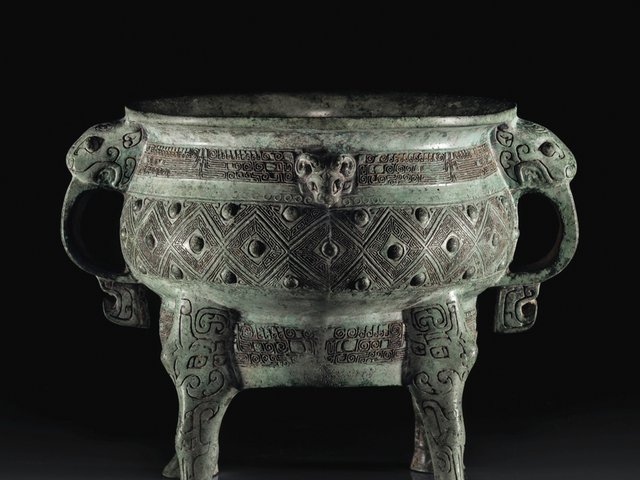The fine colourless glass known as cristallo (from its resemblance to rock-crystal), depending for its purity on the careful selection of a preparation of quartzite pebbles from the Ticino River in northern Italy and plant ash from the Levant, was developed in Venice on the island of Murano, before the middle of the 15th century. From then on, it enjoyed prestige and popularity on the luxury market. Often enamelled and gilded, to enhance its appeal to high-status clients, it was also suitable for engraving with the diamond-point.
Since the early 16th century, Venetian glasshouses also made glass imitating chalcedony, opaque-white glass and so-called “opal” glass. Drinking glasses made in the 17th century with stems of fantastical form which demonstrated the makers’ extreme virtuosity in manipulating hot glass, were sought after and extensively copied in the Low Countries, and even possibly in France and England.
Beyond Venice is the title of the catalogue of the exhibition of the same name at the Corning Museum of Glass (until 17 October), and the book and the exhibition together are the first exploration of the spread of Venetian glass-making techniques and styles.
The idea for the exhibition originated with Jutta-Annette Page, former curator at Corning, the general editor of this book and compiler of detailed descriptions on carefully selected pieces. Authors from Spain, the Netherlands, France and England discuss and illustrate the glass made in those countries under Venetian influence between 1500 and 1750, by which time each country had developed its own techniques and found its own style. Dr Page’s introduction explains how plant ash from a succulent known as glasswort in England, the best type of which is found in the Mediterranean, is harvested, dried and burned in covered pots to make lumps or cakes of alkali used in glass- or soap-making. She touches on the Venetians’ rivals in Altare (in modern Piedmont), active from the late 13th century, who were equally responsible with the Muranese for the spread of Venetian glassmaking techniques all over Europe from the 16th century. The story of how Venetian-style glass began to be made outside Italy still remains unclear.
Much work has been done on 16th- and 17th-century Spanish glass in recent times, in particular on the glass of Catalonia by Ignasi Domènech whose essay on this subject is admirably clear. Covering a vast country, he treats the glass of Castile rather more cursorily, but illustrates a marvellous variety of pieces. These include the ewer in the shape of a lion from the Museu de les Arts Decoratives, Barcelona, and the ewer with millefiori decoration, a tour-de-force, acquired by Corning in 2003.
The section on French glass reveals much less about glassmaking activities there because the subject has been largely neglected by French scholars. Glass from Venice is noted in early 15th-century French documents and continued to be popular for the next two centuries. Marie-Laure de Rochebrune draws attention to domestic glass from excavated sites in Paris, Lyons, Nevers, Metz, Epinal and Châlons, but so far few complete glasses can be attributed to these centres.
The Low Countries saw unparalleled prosperity in the 17th century and fine glass was in use in bourgeois homes. Alexandra Gaba-van Dongen’s essay analyses the “Longing for luxury”, while Reino Liefkes discusses the glass itself against the economic and social background. From pieces closely based on Venetian models, the story of Dutch glass is clearly laid out in considerable detail.
The influence of Venetian glass on glassmaking in England, as in the Low Countries, dates from the mid-16th century, although, as Hugh Willmott points out, goblets were imported from Venice from the 13th century. Low Countries glass imports in the Venetian style increased considerably just before the native luxury glass industry, led by immigrants from Flanders and Venice, really took off. The outstanding group of diamond-engraved goblets attributed to the Venetian maker Jacopo Verzelini working at the Crutched Friars near the Tower of London show the strength of Venetian influence on the stem forms, although the shapes and especially the decoration are typically English.
A far smaller exhibition of 60 carefully chosen glasses drawn from the holdings of the Musée des Arts Décoratifs, Paris was held last year with the support of the Venetian glass-making concern of Salviati, now part of a French conglomerate. The glasses carefully catalogued and discussed by the Swiss scholar Erwin Baumgartner in this catalogue are still displayed in the medieval and Renaissance galleries of the museum. Other glass is kept off-site at the Centre du Verre, located on the outskirts of Paris, which will not be fully open until 2005.
In his introduction to the history of the collection, its curator Jean-Luc Olivié reveals that this is the first specialised catalogue of the 4,000 items, including Oriental and contemporary glass, since they began to be amassed in 1882.
The glasses chosen are uniformly interesting. There are several very fine late-15th-early 16th-century Venetian pieces. Refined 16th-century Venetian drinking glasses are one of the glories of the collection, and the Muranese technique of incorporating white glass threads into decorative patterns within the glass matrix is well represented here. It is only to be hoped that more of this little known collection can be published to the same high standard and displayed as soon as possible.
Originally appeared in The Art Newspaper as 'How cristallo conquered the continent'



